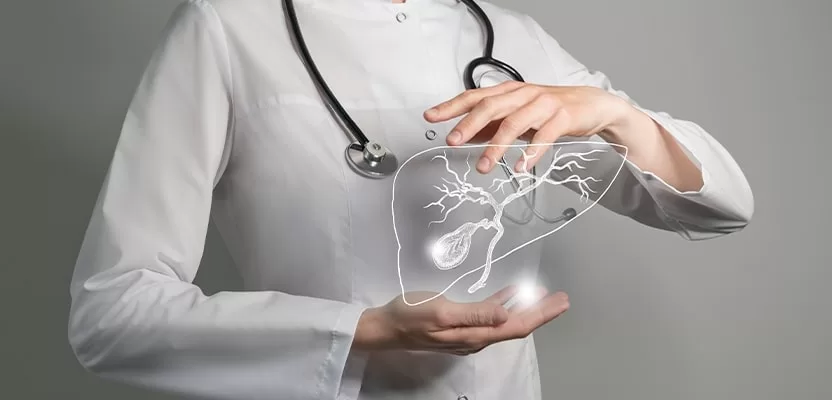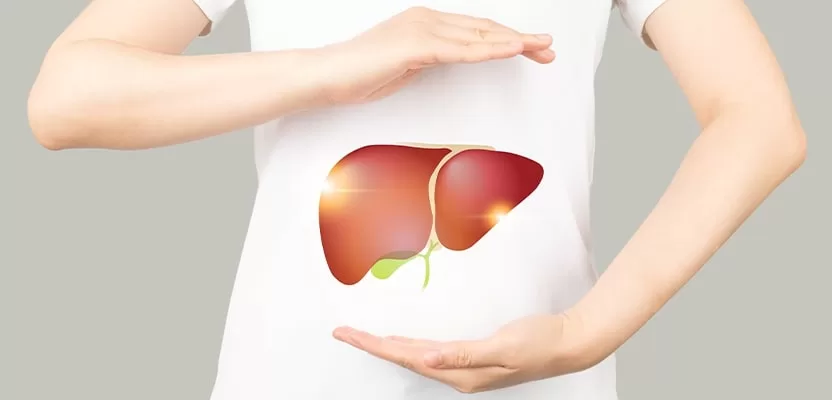+90 533 813 89 77
info@bookingforhealth.com
What Are the Functions of the Gallbladder?
The gallbladder is a small, pear-shaped organ located under the liver. Its main function is to store and release bile, a fluid produced by the liver that helps to digest fats in the small intestine. When food containing fats enters the small intestine, the gallbladder releases bile into the small intestine through the bile duct. This helps to emulsify the fats, breaking them down into smaller droplets that can be easily absorbed by the body. The gallbladder also concentrates and releases bile in response to hormones and nerve signals, as well as regulating the flow of bile into the small intestine.

What Are the Causes of Gallbladder Cancer?
Gallbladder cancer is a rare type of cancer that occurs in the gallbladder, a small organ located under the liver that stores bile. Among the causes of gallbladder cancer are several factors.
- Gallstones: People with gallstones, which are hardened deposits of bile that can form in the gallbladder, are at an increased risk of developing gallbladder cancer.
- Chronic Inflammation: Inflammation of the gallbladder, known as cholecystitis, can increase the risk of gallbladder cancer.
- Gender: Gallbladder cancer is more common in women than in men.
- Age: The risk of gallbladder cancer increases with age.
- Family History: A family history of gallbladder cancer may increase a person’s risk.
- Obesity: Obesity is a risk factor for gallbladder cancer.
- Diet: A diet high in fat and cholesterol may increase the risk of gallbladder cancer.

What Are the Symptoms and Treatment Options of the Gallbladder?
Gallbladder cancer may have more than one symptom. Severe pain in the middle of the abdomen, which can last for several hours, nausea and vomiting, fever, chills, jaundice (yellowing of the skin and eyes), abdominal bloating, and digestive problem when consuming fatty foods are among the most common symptoms of gallbladder cancer.
Several options are preferred for treatment. Treatment options for gallbladder problems depend on the specific condition and stage of the cancer.
- Medications: Non-steroidal anti-inflammatory drugs (NSAIDs) may be used to relieve pain and inflammation. If there is an infection, antibiotics may be prescribed.
- Surgery: The most common surgical treatment for gallbladder problems is cholecystectomy, which is the removal of the gallbladder. The procedure is usually performed laparoscopically, which is less invasive than open surgery.
- Lithotripsy: In some cases, gallstones can be broken down using shock waves (lithotripsy) and then removed with a tube that is passed through the mouth and stomach. Endoscopic retrograde cholangiopancreatography (ERCP): A procedure that uses a thin, flexible tube with a light and a camera at the end to remove gallstones or remove blockages in the bile ducts.
- Careful Waiting: If symptoms are not severe or frequent, a period of careful waiting may be recommended.
If you have gallbladder cancer, it’s important to note that treatment options will vary depending on the stage of the cancer. The most common treatment options for gallbladder cancer include surgery (such as removal of the gallbladder, surrounding lymph nodes, and sometimes part of the liver), radiation therapy, and chemotherapy. The treatment plan will depend on the size and stage of the cancer and the patient’s overall health.
What Should Be Considered After Treatment of Gallbladder Cancer?
After treatment for gallbladder cancer, it is important to closely monitor the patient’s health to ensure that the cancer has not returned, and to address any side effects or complications from the treatment. Therefore, there are several things to consider after treatment.
- Follow-up Care: Patients will typically have regular follow-up appointments with their healthcare team to monitor their health and check for any signs of cancer recurrence.
- Nutrition: After surgery, the patient may have difficulty digesting fats, and a dietitian may be consulted to help manage this.
- Lifestyle Changes: Lifestyle changes such as quitting smoking, maintaining a healthy weight and diet, and regular exercise may help to prevent the recurrence of cancer.
- Managing Side Effects: The patient should be aware of the possible side effects of their treatment such as fatigue, pain, and nausea, and work with the healthcare team to manage them.
- Emotional Support: Cancer treatment can be stressful, so patients need to have access to emotional support from family, friends, and support groups.
- Monitoring for Recurrence: Even if the initial treatment is successful, it is important to be aware of any signs or symptoms that may suggest a recurrence of the cancer, such as abdominal pain, jaundice, or weight loss.